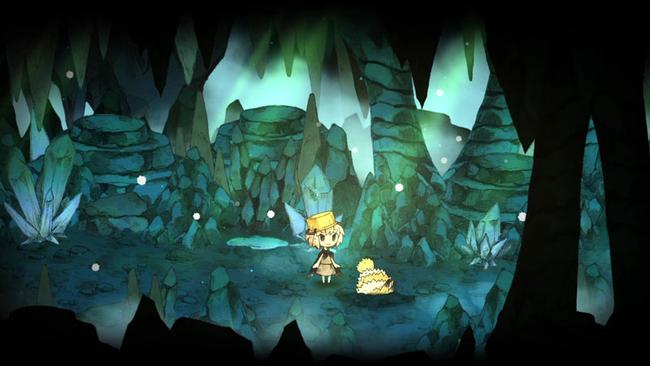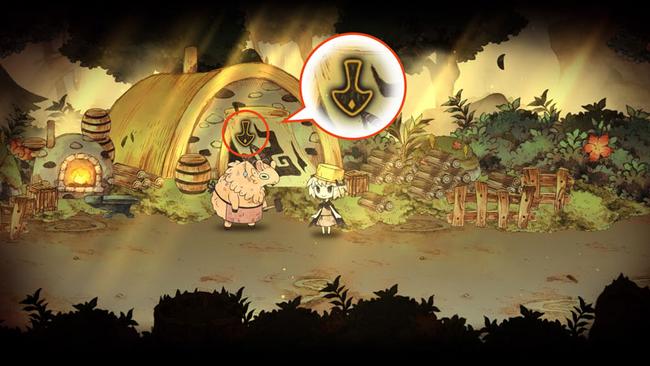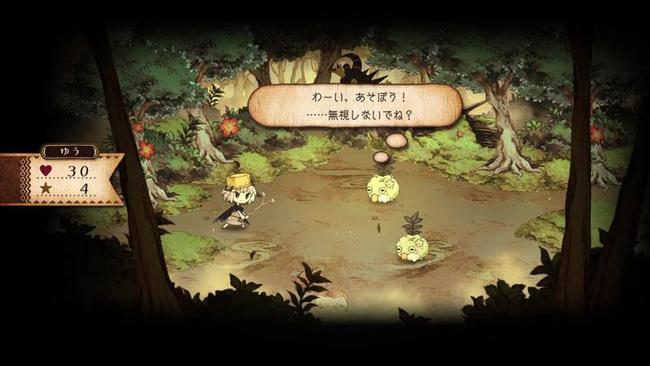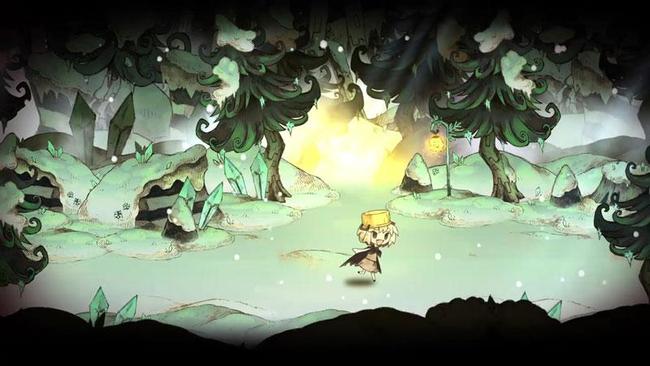The Cruel King and the Great Hero review
When you sit down with a game, you never know what you’re going to get; especially when you know you’re going to be reviewing it. First impressions can carry an otherwise mediocre game far, and if there’s nothing else notable about The Cruel King and the Great Hero, it leaves a strong first impression. Sitting at the title screen, greeted by a wonderful vocal theme by Akiko Shikata, I was in a good mood from the get-go – and that only continued upon starting the game proper. The storybook aesthetic, a strong narrative hook, and charming characters helped make it feel like the game had everything it needed for it all to come together. Unfortunately, while first impressions can certainly lift my opinion of a game early on, rarely are they enough to overshadow a game saddled with flaws.
Have you ever played a game where everything else about it was fantastic, but one singular aspect of it dragged it down? That’s the case here. There are other problems with Cruel King, to be sure, but almost all of them hinge on one simple fact – this game probably should not have been an RPG. Or failing that, large portions of its gameplay design needed to be reworked entirely. For every aspect of Cruel King that stands out in a positive light, I can think of a number of counterpoints for nearly everything it does so well. Combat is simple and easy to grasp, but it never picks up enough steam to justify the bloated HP that bosses carry, or to make up for the game’s absurdly high random-encounter rate. The game’s artstyle is gorgeous, but its map design is littered with repeated landmarks, making trawling through areas a slog without constantly pausing to check the map. Both the main story and sidequests often feature some interesting stories attached to them, but at crucial moments the game’s localization drops the ball, both inside and outside of the main scenario.

Perhaps it’s best to start at the beginning, and in Cruel King’s case, that comes down to the story. The entire presentation, even down to the menus, frames the game as some storybook come to life. Characters, enemies, and the UI are all presented as if everything is happening from the pages of some fairy tale; the tale that Cruel King tries to tell is Yuu's - a little girl whose Papa was the legendary hero and died after defeating the Demon King. Orphaned since she was a baby, she’s been raised by her Father the Dragon King. Even early on the game makes it clear that the two are, or at least were, one and the same – and either due to some sense of guilt, or something else entirely, Yuu trains to eventually kill her own Dad, all the while none the wiser.
I don’t think I need to say this is a great hook for a story. In fact, my problems with the game don’t really have anything to do with the narrative as it stands; for one, while the plot device is rather glib, the game is still clearly meant to be suitable for children. Many of the game’s sidequests seem primed as opportunities to teach some sort of moral or lesson, either to Yuu or perhaps even the player in a roundabout way. There’s a sidequest chain where you have to help an elderly monster by the name of Nathan fulfill his last few desires, by finding gourmet treats for his last meal. Or what about the tension between two different monster clans, and how a simple misunderstanding led to such a long-running feud between former lovers? Almost all of the sidequests have genuinely touching stories, to the point where I would love to recommend that players experience them all – but the problem, much like with everything else surrounding the game’s story, is how the gameplay actively gets in the way of whatever feelings the game is attempting to convey.

Every single sidequest in the game revolves around either finding an item in the world, or fighting specific enemy types – which requires exploring the already tedious levels. While the game does feature fast travel, it’s rather limited, only offering the ability to warp to set locations on the map. If you’re forced to walk back and forth between two separate locations where neither has a fast travel point near them, as the game is wont to do, it quickly becomes even more of a slog than the game normally is. As stated, some quests ask you to fight a specific enemy, or to gather items that are dropped by one. Most will ask that you do a bit of both. While the engagement is certainly appreciated over just walking from one location to another, it’s not like combat is without its own fair share of problems.
Namely, combat is simple. You can attack, you can guard, you can use an item, or you can use a skill. Your partners, which will be assigned during specific points of the story, can do the same – while Yuu also specifically has the ability to run. Skills can only be activated by expending Energy, which you’ll normally gain one point of Energy for each turn not accounting for any accessories that increase the amount. Defending will half the damage you take for the turn you’re guarding on, and will also gift you an additional point of energy after the turn’s conclusion. It’s fairly standard stuff, right? Yes – to an unfortunate degree. Skills always cost at least 2 energy points, with many of them costing even more. Yuu’s signature attack from the very beginning of the game costs 4. This means that you’ll be forced to either guard or use regular attacks for several turns in-between letting loose skills; not to mention the pace in which you unlock new skills is absolutely glacial.

The later into the game you get, the more enemies that it throws your way. Some skills will attack multiple enemies on the screen, but there are always going to be times where you’re forced to single-target a single enemy while you wait for your energy to recharge. There’s very little actual depth to it all, and it only gets worse when considering just how often enemies will attack you. Once you’re comfortably stronger than the enemies in an area, you’ll be permitted to run – which also lowers the encounter rate – but by the time that rolls around, you’ll have already suffered through dozens of the same enemy patterns with little to show for it. Since there’s very little strategy to the combat, in the end it feels like needless padding which actively gets in the way of story pacing, both for the main narrative and beyond.
The game’s art elicits a similar response. Character and enemy artwork is fine – even reskinned enemies have unique design elements that help make them fit in with whatever new environment they find themselves in, most of the time. The real issue comes down to the world itself. Everything takes place on a 2D plane, which is well and good, but little has been done to make the world actively feel interesting to explore. A big part of that comes down to how similar different sections of the same location might look the same. While the in-game map you can open up does its job well enough, it’s still fairly easy to find yourself getting turned around. Even on my PlayStation 4 copy, in certain areas, it’s very easy to see the compressed edges of artwork that’s been blown up to proportions it was likely never originally intended to be viewed.

Perhaps the most damning indictment I can give the game comes down to the quality of its localization. It’s not that it’s actively terrible, and it’s clear that a lot of passion did go into the project – but it’s the consistency that stings most of all. For a game so heavy with dialog, so much of it is dry. Perhaps part of that is due to some character limitation, but that doesn’t change what’s there in the final product. At times text formatting will be messed up, with a line break where it shouldn’t be, or with numerous instances of text overflowing from dialog bubbles or UI elements in general. It happened often enough to stand out, even early on, and I do sadly think that it’s a detriment to the overall experience when so much of what I genuinely enjoyed about the game came down to its narrative, warts and all.
I did genuinely find a lot to love in some of the disparate aspects of The Cruel King and the Great Hero, but games can only ever be a sum of their parts. While there have absolutely been games in the past where I was able to overlook poor gameplay due to the strength of everything else in the package, it feels at least a little bit different when said gameplay is an active detriment to everything around it. Likewise, while plenty of games have had localization issues in the past, this feels like a game whose identity is so closely tied to being a fairy tale – to the point that NIS America sent us a literal “Storybook Edition” for the game – probably could have, and indeed should have had another editing pass done. At least the soundtrack is worthy of praise without any stipulations, but it’s hard to recommend the full package with all of its flaws.